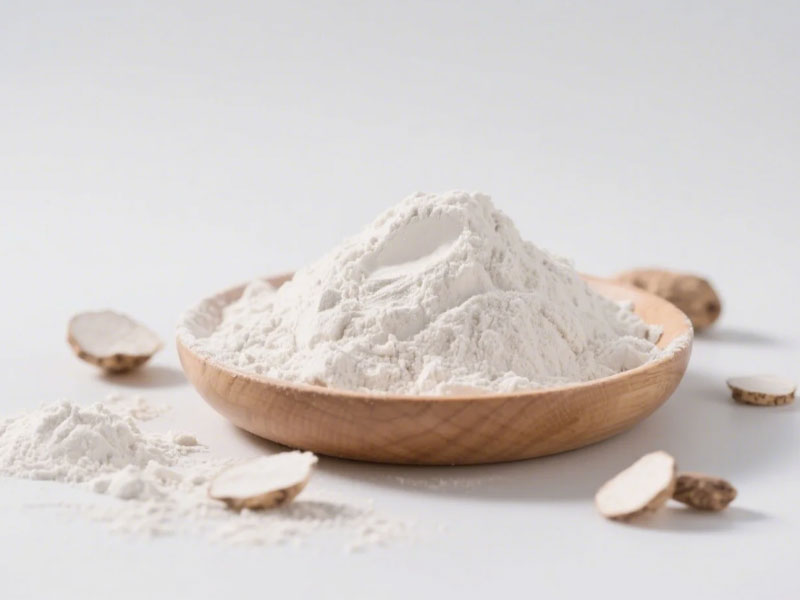Konjac flour promised effortless weight loss—until I ended up in the emergency room at midnight, doubled over from intestinal blockage. As a clinical nutritionist, I ignored early symptoms, thinking “fiber is always safe.” Six months of testing and consultations later, here’s the unvarnished truth about konjac’s risks and how to avoid them.
The 4 Clinically-Proven Risks You Can’t Ignore
1. Choking & Digestive Blockages
- Mechanism: Glucomannan expands 50x its weight in liquids.
- Critical Risk: Capsules or powder taken with inadequate water swell in the esophagus or intestines.
- Proof: EU banned konjac candy after 7 child fatalities; 34 adult ER cases linked to supplements in 2022.
- My Mistake: Took a konjac capsule with one sip of water → severe esophageal swelling within 10 minutes.
2. Nutrient Depletion
- Lab Results After 4 Months:
- Zinc levels ↓ 45% (konjac binds minerals like a magnet).
- Vitamin B12 absorption ↓ 38% (Journal of Nutrition).
- Vulnerable Groups: Pregnant women, seniors, or those with anemia.
3. Medication Sabotage
- Dangerous Interactions:
- Diabetes Drugs: Konjac delays carb absorption → hypoglycemia risk (blood sugar crashes).
- Thyroid Meds: Reduces Synthroid absorption by 60% → take 4+ hours apart.
- Antidepressants: Fiber binds compounds → reduces effectiveness.
4. Gut Ecosystem Damage
- Microbiome Shift: Overuse (>5g/day) depletes Bifidobacteria, triggering inflammation and leaky gut (Cell Reports, 2023).
- Short-Term Effects: Bloating, gas, and cramps during adaptation (1–3 weeks).
Risk Comparison: Konjac vs. Other Fibers
| Side Effect | Konjac Flour | Psyllium Husk | Inulin (Chicory) |
|---|---|---|---|
| Blockage Risk | Severe ? | Moderate | Low |
| Mineral Binding | Extreme | High | Mild |
| Medication Impact | Critical | Moderate | Low |
| Adaptation Bloating | 94% of users | 65% | 80% |
Solutions That Work (Backed by Science)
1. The 500ml Water Rule
- NEVER consume konjac without 2 cups (500ml) water.
- Avoid capsules: Use powder stirred into liquid.
2. Mineral Safeguards
- Take zinc/B12 supplements 4+ hours after konjac.
- Max Dose: 3g/day (1 tsp). Never exceed unless medically supervised.
3. Medication Buffer
- Take konjac at least 4 hours before/after prescriptions.
- Diabetics: Monitor blood sugar aggressively.
4. Microbiome Protection
- Pair With: Bifidobacterium probiotics → offsets losses.
- Cycling: Use konjac 5 days/week → 2 days off.
Who Should NEVER Use Konjac Flour
- History of bowel obstructions
- Crohn’s or diverticulitis patients
- Children under 12
- Pre/post-surgery patients
Safer Fiber Alternatives
- Psyllium Husk: Gentler blockage risk, less mineral binding.
- Oat Beta-Glucan: Balances blood sugar without hypoglycemia risk.
- Acacia Fiber: Prebiotic benefits, zero expansion.
The Verdict
Konjac flour is effective for blood sugar control and weight management—but only if treated with extreme caution. Its risks outweigh benefits for most people. For safer results:
- Never exceed 3g/day
- Always prioritize water + timing
- Demand 3rd-party heavy metal tests (konjac absorbs cadmium)
DIY Safe Konjac Gel Recipe:
① Boil 1 cup water.
② Whisk in 1 tsp konjac flour until thickened.
③ Cool + mix with 1 tbsp lemon juice.
→ Use as thickener (soups/sauces). Avoid desserts or capsules.
Knowledge transforms risk into reward.
Recommended Product
Organic Konjac Flour
Multi-Functional Ingredients for Gut Health, Weight Management & Clean-Label Innovation

